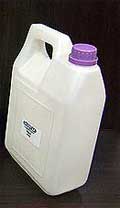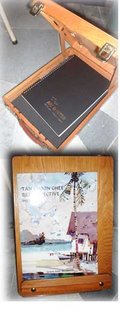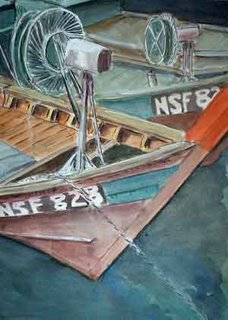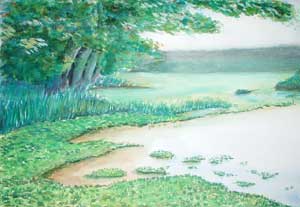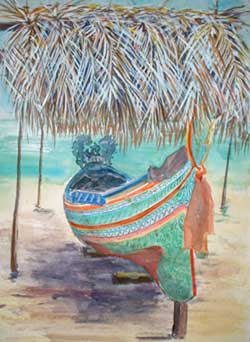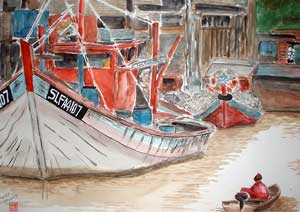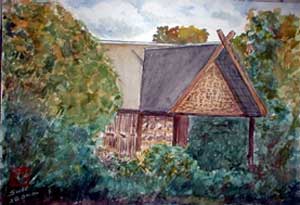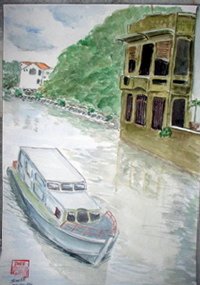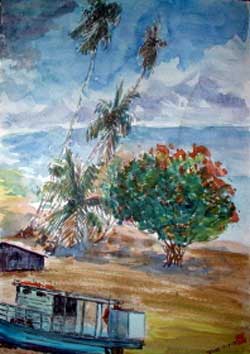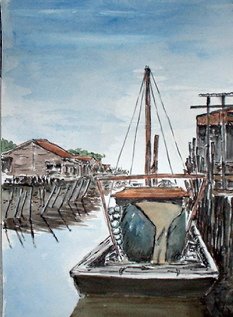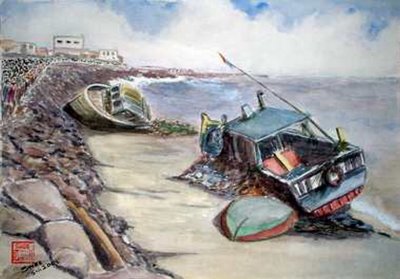What is this?
Welcome to my watercolour blog. This is my online journal to document my progress as a watercolourist. I did not undergo any formal education in watercolour so I think I can consider myself largely self-taught. And yes, I am an amateur, having a fulltime job elsewhere and doing watercolour as a serious escapade. It is more of a hobby and for the love of this medium.
Why I paint?
I took up watercolour painting three years ago after having abandoned it for over 25 years. Within this site are all my watercolour paintings since 2003.
Where do I begin?
I loved painting and drawing from as young as I can recall. And I have painted quite seriously since I was a teen but back then, art is not exactly something you can earn a living from.
I suppose it is the same all over the world; life as an artists in the 70s is not exactly an enviable career choice.
And when I came to the crossroad of my life back then, of having to decide on what career I would eventually want, I decided to keep art out of the way for practical reasons.
One evening, on a bridge over a swift flowing river, I took my painting set (palette, colours and brushes) and set them on a journey down river. I said back then, I remember vividly, that should our paths cross again, then I would pick up my brush again.
And in 2003, our paths did meet again. A chance meeting with master artist Tang Tuck Kan at the Petronas Art Gallery sparked my interest watercolour again, and a year long tutorship under this wonderful man in one of the many Petronas ClassArt programmes brought me back to watercolours again.
As I painted, I have the good fortune of meeting personally wonderful watercolourists of Malaysia, such as the famous Chang Fee Ming, Chow Chin Chuan, Calvin Chua, Dr Wong Seng Tong, Maamor Jantan (whom I have also had the good fortune to receive a three-month instruction), Rafiee Abdul Rahman and many others. The fact that some of them are self-taught inspired me to continue, albeit my skills are at the disadvantage of the time past but still something that can be acquired with the quantum leap technology that the artistic medium has undertaken.
Painting Technique/Equipment:
I only use one brush to paint - a large Chinese wolf hair brush, a method imparted by my first mentor. I use a wide range of watercolours, with no fondness for any particular brand. I have also started using thicker acid-free paper because of the ease with which I can exploit the water medium.
Painting Subjects:
I usually paint boats and fishing villages in Malaysia. These are the subjects that are near and dear to me, for I have grown up with them and which I know pretty well. My other subject is water, which I feel is most difficult to depict, especially in watercolour.
Recently, I have begun experimenting painting man-made structures such as buildings which I find to be quite a challenge because unlike boats, they come in many forms.
Aspirations:
I hope to be able to meet more Malaysian watercolourists, especially the amateur ones since we are in the same boat (no pun intended), to learn from each other and share our knowldge in this very fluid medium.
(updated Oct 2006)
